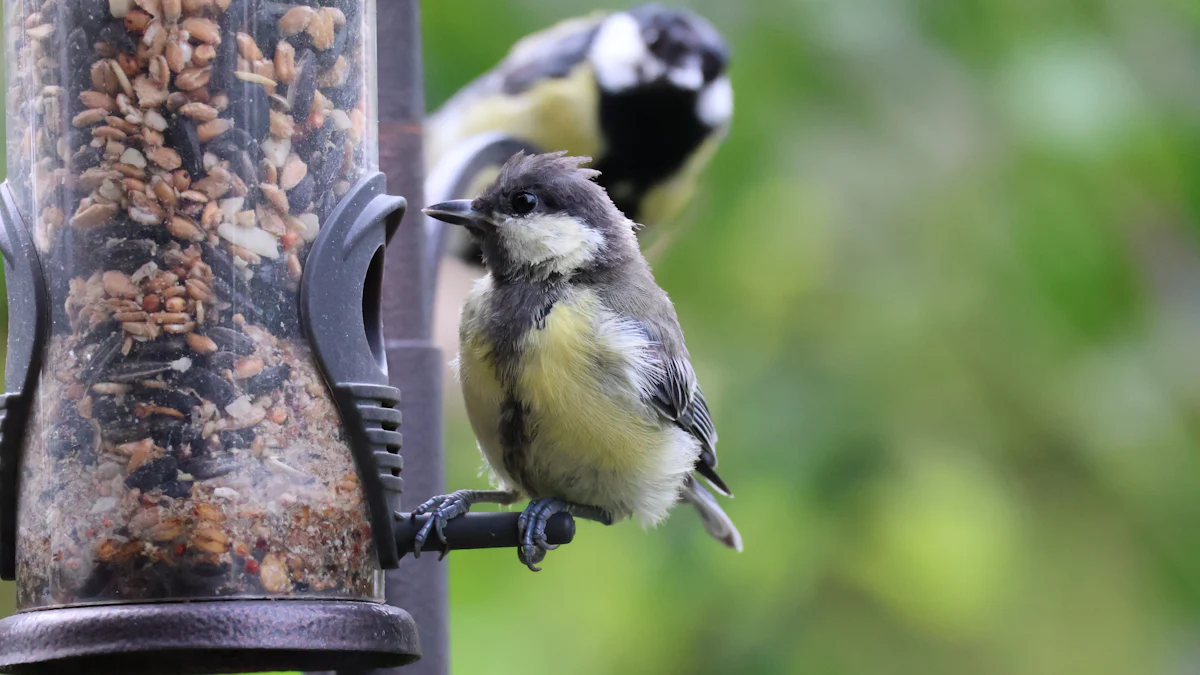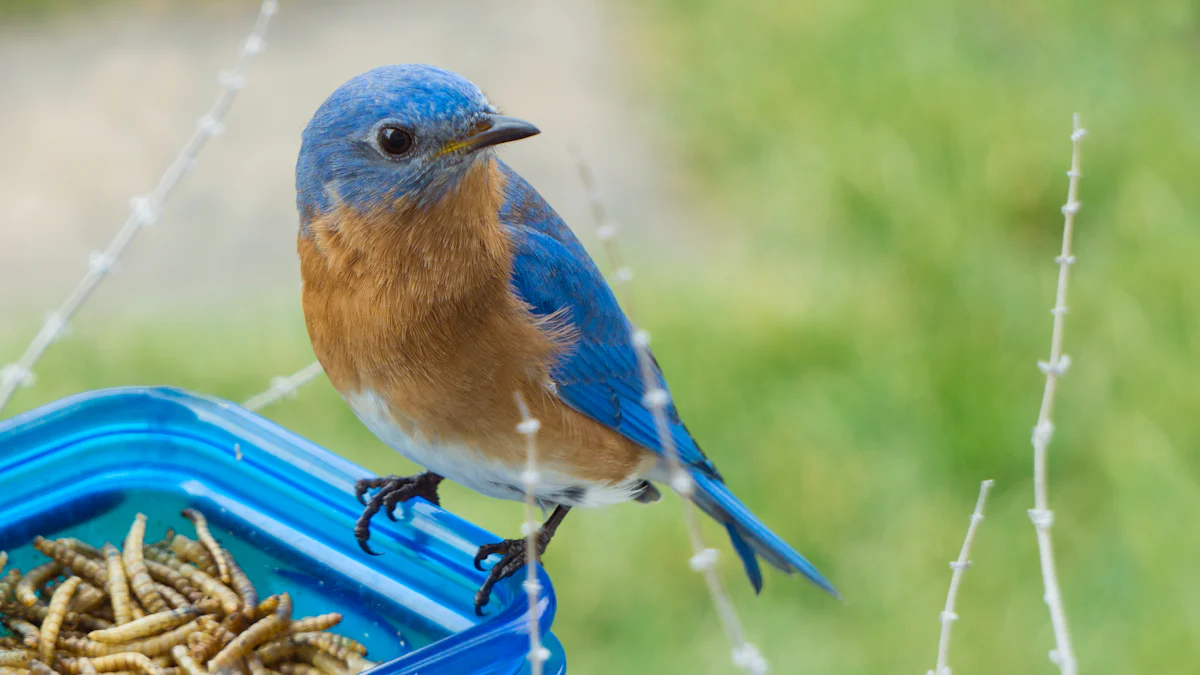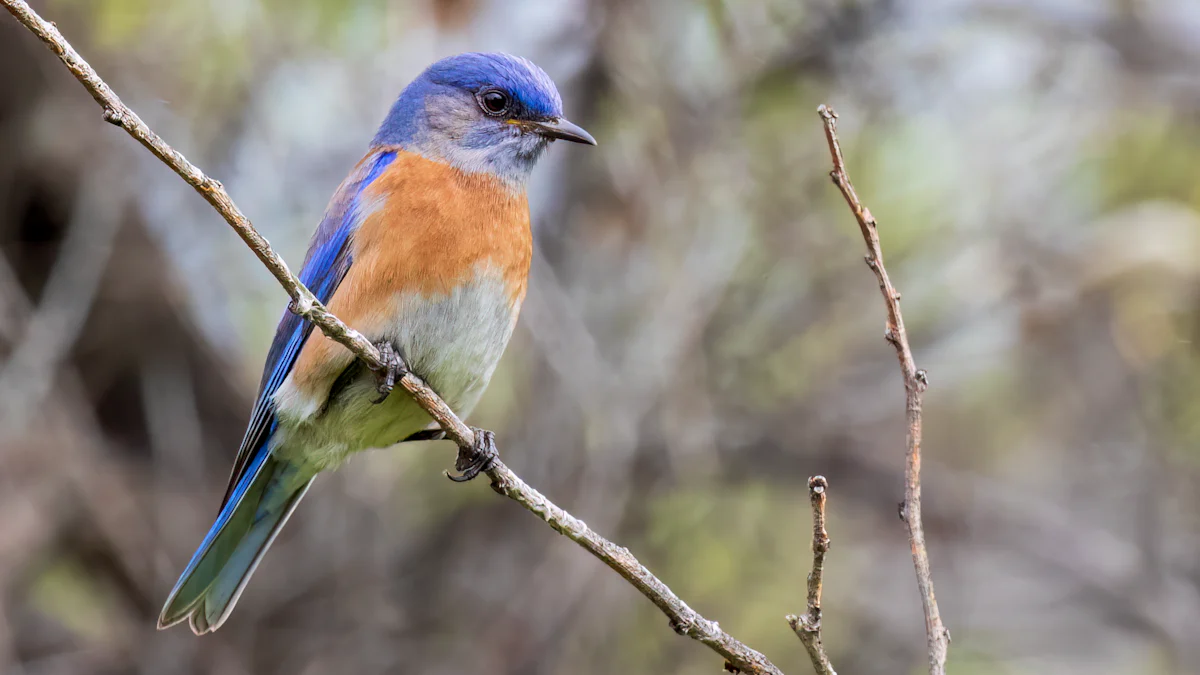
I’ve found that dried mealworms for birds are one of the easiest and most effective ways to feed them. They’re packed with protein, fat, and essential nutrients like vitamins B12 and zinc, which help birds stay healthy and energetic. Just mix mealworms for birds into birdseed or serve them alone in a feeder, and watch the birds flock to enjoy!
Key Takeaways
- Dried mealworms are healthy food for birds. They have protein, vitamins, and minerals to keep birds strong and active.
- Feed mealworms often in spring and summer for nesting birds. Give more in fall and winter to help birds store energy.
- Use tray or hanging feeders for mealworms. Soak them in water to make them tastier for birds.
Benefits of Mealworms for Birds

Nutritional Advantages
I’ve always been amazed at how much nutrition is packed into dried mealworms. They’re like a superfood for birds! Mealworms are loaded with protein, which helps birds build strong muscles and stay active. Did you know they contain about 20-50% protein? That’s a huge boost for feather health and overall vitality.
They’re also rich in essential vitamins like B12 and B6, along with minerals such as zinc, iron, and potassium. These nutrients strengthen bones and support immune health. I’ve noticed that young birds, especially, thrive on mealworms because they need extra protein for growth. During colder months or migration, mealworms provide the energy birds need to stay strong and resilient. It’s no wonder they’re a favorite among bird enthusiasts like me!
Versatility for Different Bird Species
One of the coolest things about mealworms is how many bird species love them. I’ve seen chickadees, cardinals, bluebirds, and even woodpeckers flock to my feeders when I put out mealworms. They’re especially helpful during breeding seasons when birds need extra nutrition for themselves and their chicks.
Here’s a quick look at how mealworms benefit different birds:
| Bird Species | Benefits of Dried Mealworms |
|---|---|
| Chickens | Protein-rich energy boost aiding in egg production |
| Ducks | Improved feather quality and overall vitality |
| Canaries | Enhanced nutrition during breeding |
| Finches | Increased energy for raising young |
It’s amazing how versatile mealworms are. Whether you’re feeding backyard songbirds or poultry, they’re a great choice.
Convenience and Storage Benefits
I love how easy it is to store dried mealworms. Unlike live ones, they don’t need refrigeration. Just keep them in an airtight container in a cool, dry place, and they’ll stay fresh for months. Plus, they’re affordable. A pound of dried mealworms costs around $15-$25 and contains thousands of worms. That’s a lot of happy birds for a small price!
Another bonus? Mealworms for birds are super versatile. You can mix them into your regular birdseed or serve them on their own. Either way, they’re a tasty and nutritious treat that birds can’t resist.
Feeding Frequency and Timing
Seasonal Feeding Guidelines
I’ve noticed that birds’ needs change with the seasons, so I adjust how I feed them. During spring and summer, birds are busy nesting and raising chicks. They need extra protein to stay strong and feed their young. This is the perfect time to offer mealworms for birds daily.
In fall, birds prepare for migration or colder weather. They need high-energy foods to build fat reserves. Mealworms are a great choice because they’re packed with nutrients. In winter, I like to offer mealworms alongside suet or seeds. Birds need the extra calories to stay warm and active.
Daily Feeding Recommendations
When it comes to daily feeding, I keep it simple. I usually put out a handful of mealworms in the morning and another in the late afternoon. Birds tend to eat more in the early hours, so I make sure they have fresh food ready. If I notice the mealworms are gone quickly, I’ll add a little more. It’s incredibly easy! Simply mix the mealworms into your regular bird seed mix or provide them alone in a dish or hopper feeder.
Best Times to Offer Mealworms
I’ve found that early morning is the best time to offer mealworms. Birds are most active then and need energy after a long night. Late afternoon is another good time, especially in winter when days are shorter. Watching them flock to the feeder during these times is such a joy!
Choosing Feeders for Mealworms

Tray Feeders
I’ve found tray feeders to be one of the simplest ways to serve mealworms. They’re open and easy for birds to access, making them a favorite for species like robins and bluebirds. When choosing a tray feeder, I always look for a few key features:
- Tall sides to keep the mealworms from spilling out.
- A roof or rain guard to protect the food from bad weather.
- Drainage holes to prevent water from pooling inside.
- Tamper-resistant designs to keep pests like squirrels away.
These features make a big difference in keeping the mealworms fresh and appealing. I also love how versatile tray feeders are. You can place them on a stand, hang them, or even set them on a flat surface.
Hanging Feeders
Hanging feeders are another great option for offering mealworms. I like using ones with lids or squirrel-resistant domes. These features keep the mealworms dry and safe from rain. Plus, the tall sides help prevent the worms from escaping, which is always a plus.
I’ve noticed that hanging feeders work well for attracting smaller birds like chickadees and finches. They’re also perfect if you want to keep the food off the ground and away from larger animals. Watching birds flutter around a hanging feeder is such a treat!
Ground Feeding Options
Sometimes, I scatter mealworms directly on the ground. This method feels the most natural for birds like sparrows and thrushes, which prefer foraging. However, I’ve learned that wild birds often prefer live mealworms over dried ones. If you want to make dried mealworms more appealing, try soaking them in water first.
Here’s a quick look at the benefits of ground feeding:
| Benefit | Description |
|---|---|
| Promotes Healthy Growth and Development | Mealworms provide essential protein for young birds, aiding their growth. |
| Supports Reproduction and Egg-Laying | The nutrients in mealworms are crucial during breeding seasons for egg-laying birds. |
| Boosts Energy Levels | Mealworms offer energy, especially beneficial during migration or cold weather. |
| Encourages Natural Foraging Behavior | They stimulate mental and physical activity in pet birds by mimicking natural foraging. |
It’s incredibly easy! Simply mix the mealworms into your regular bird seed mix or provide them alone in a dish or hopper feeder and watch the birds come eating. Dried mealworms are nutritious. They provide a blended balance of protein, fat, and fiber to promote healthy, vigorous birds.
Storing Mealworms for Birds
Preventing Moisture and Pests
Keeping mealworms fresh and pest-free is easier than you might think. I always make sure the container has a tight seal. This keeps pests out and prevents the mealworms from escaping. I also check the container regularly for any signs of pests, eggs, or bad smells. If I notice anything unusual, I clean the container right away.
Another tip I’ve found helpful is replacing the substrate periodically. This prevents mold and bacteria from building up. I make sure the substrate stays dry because dampness can ruin the mealworms. For extra protection, I sometimes sprinkle a little diatomaceous earth around the storage area. It’s safe for mealworms and keeps pests at bay.
Tips for Long-Term Storage
When I want to store mealworms for a long time, I focus on keeping them in a cool, dry place. Heat and humidity can cause mold, so I avoid storing them near windows or in damp basements. I also use containers with ventilation holes or mesh lids to reduce moisture.
For even longer storage, freezing works wonders. I pack the mealworms in airtight bags and freeze them at very low temperatures. This keeps them fresh for over six months. If I have extra time, I sometimes dry the mealworms further or turn them into mealworm powder. It’s a great way to preserve their nutrients.
Rehydrating Mealworms for Birds
Sometimes, birds prefer mealworms that are a bit softer. To make them more appealing, I soak the dried mealworms in lukewarm water for a few minutes. This rehydrates them and makes them look more like live mealworms. It’s incredibly easy! Simply mix the mealworms into your regular bird seed mix or provide them alone in a dish or hopper feeder. Watching the birds enjoy this nutritious treat is so rewarding.
Tips for Successful Feeding
Mixing Mealworms with Other Foods
I’ve found that mixing mealworms with other foods is a great way to keep birds interested. Birds love variety, so I often combine mealworms with seeds, nuts, or even small pieces of fruit. This mix not only attracts more species but also ensures they get a balanced diet.
Sometimes, I sprinkle mealworms into suet cakes or peanut butter spreads. It’s an easy way to add protein to their meals, especially during colder months. If you’re just starting, try adding a small handful of mealworms to your regular birdseed mix. It’s incredibly easy! Simply mix the mealworms into your regular bird seed mix or provide them alone in a dish or hopper feeder and watch the birds come eating. Dried mealworms are nutritious. They provide a blended balance of protein, fat, and fiber to promote healthy, vigorous birds.
Attracting Birds to Mealworms
Getting birds to try mealworms for the first time can take a little patience. I’ve had success by soaking dried mealworms in lukewarm water to make them softer and more appealing. Birds seem to love the texture!
If you’re introducing mealworms to your backyard, start with live ones. Birds are naturally drawn to movement, so live mealworms can help them recognize this as food. Once they’re used to it, you can switch to dried mealworms. I also recommend using platform feeders or tray feeders to keep the mealworms contained and visible. These feeders make it easier for birds to spot their treat.
Monitoring and Adjusting Feeding Habits
I always keep an eye on how much food the birds are eating. If the mealworms disappear quickly, I’ll add a little more the next day. During spring, I increase the amount since birds need extra protein for breeding. In winter, I pair mealworms with suet to give them the energy they need to stay warm.
For birds that aren’t familiar with mealworms, I introduce them gradually. I start with small amounts and mix them with their usual food. Over time, I notice they begin to prefer the mealworms. Moderation is key, though. I never overfeed and always supplement with seeds and fruits to keep their diet balanced.
Feeding mealworms for birds has been such a rewarding experience for me. They’re easy to use, packed with nutrients, and attract a variety of bird species to my yard. Watching birds thrive on this protein-rich treat is truly satisfying.
Proper storage is key to keeping mealworms fresh and nutritious. Here’s a quick guide:
| Storage Practice | Importance |
|---|---|
| Airtight container | Prevents moisture and spoilage |
| Cool, dry place | Maintains nutritional value |
| Away from sunlight | Protects quality |
It’s incredibly easy! Simply mix the mealworms into your regular bird seed mix or provide them alone in a dish or hopper feeder and watch the birds come eating. Dried mealworms are nutritious. They provide a blended balance of protein, fat, and fiber to promote healthy, vigorous birds.
If you’ve been thinking about trying mealworms, now’s the time. They’re clean, convenient, and a natural part of many birds’ diets. Start feeding them today and enjoy the joy of birdwatching right in your backyard!
FAQ
How do I get birds to eat dried mealworms?
I soak dried mealworms in lukewarm water to soften them. Birds love the texture! It’s incredibly easy! Simply mix them into birdseed or serve alone.
Can I feed mealworms to birds year-round?
Yes! Birds benefit from mealworms in every season. They’re especially helpful during nesting, migration, and winter when birds need extra protein and energy.
Are dried mealworms better than live ones?
Dried mealworms are easier to store and handle. Live mealworms attract birds faster, but rehydrating dried ones works just as well. Both are nutritious and effective.


